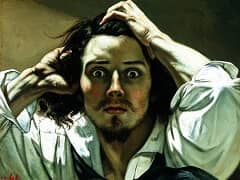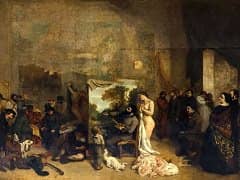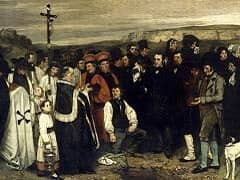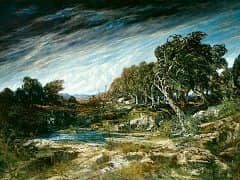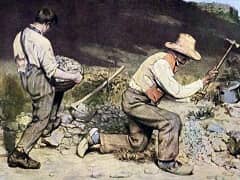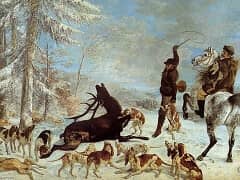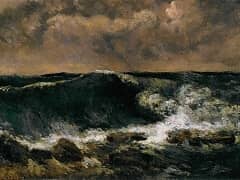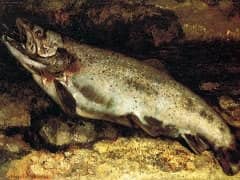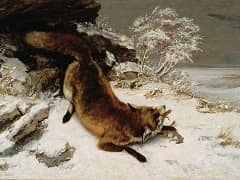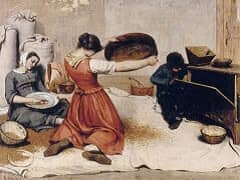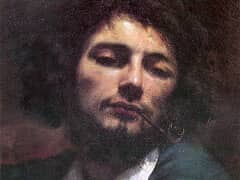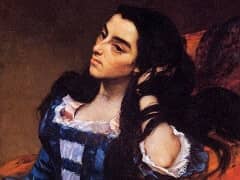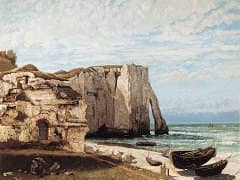The Source of the Loue, 1864 by Gustave Courbet
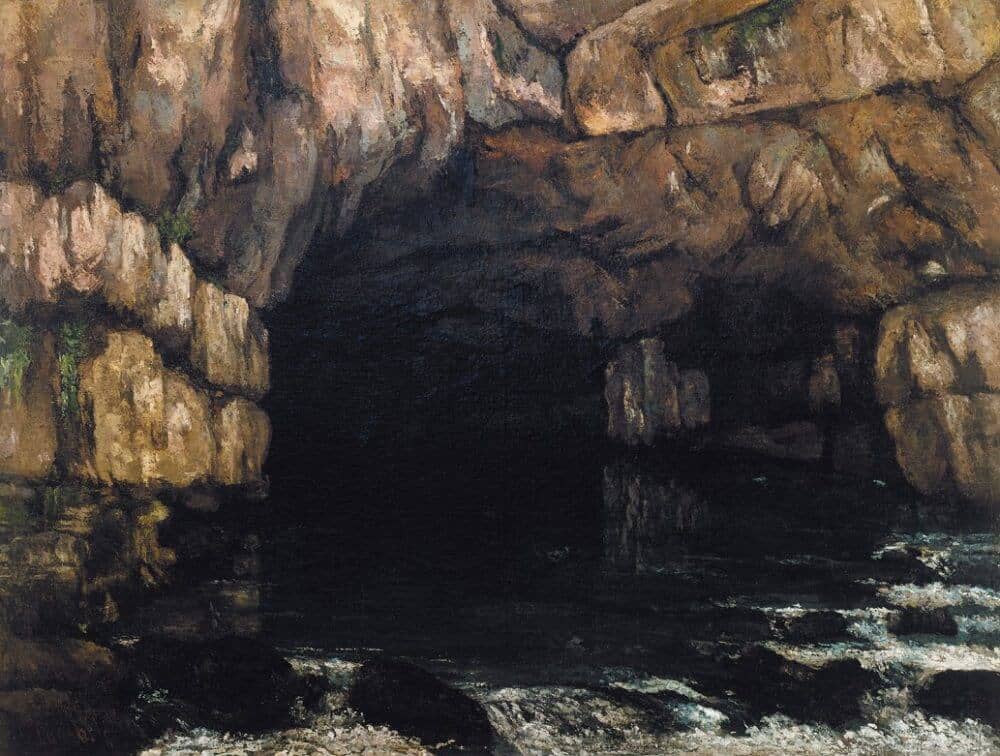
One of the noteworthy geological features of the region of the Doubs, located in the eastern part of the Franche-Comte close to Switzerland, is the occurrence of underground streams, formed by the porous limestone of the Jura plateau, which then rise through the rock to form the rivers of the area. Some of these streams, like that of the Lizon, emerge from a high ledge, creating one of the several waterfalls in the region. Others flow out from deep caves in the limestone rock. The beautifully clear small Loue River that runs through Courbet's town of Ornans is one of the latter. It emerges from an opening in the heavy rock in the initial form of a still pool, which abruptly becomes a rapid before settling down into the swift but quiet waterway seen under the bridges of Ornans. Courbet spent most of 1864 in the Doubs region, either in Ornans or staying with his friend, the poet Max Buchon, in nearby Salins. One of the landscape sites he focused on with particular intensity during this year was the source of the Loue. Characteristically, he chose not to see it from the picturesque distance, which would include the full shape of the cliff, the surrounding trees, and a stretch of the foamy water. Instead he moves in so as to give us the impression of being at the point of falling in. We are brought close enough to the cave opening to experience palpably its dark mysteriousness. The looming rocks are painted in a building up of rough planes of color that convey an immense material presence, while at the same time calling to mind Cezanne's "building blocks" of color. The sense of fascination conveyed by this close-up view of the source is borne out in the fact that Courbet painted at least three other known versions of the theme, each with slight variations, but all of them fully realized works of art.
In them Courbet's attraction to dark, enclosed spaces, also seen in the paintings of The Stream of the Black Well, is given a specifically sexual inflection. These dark openings, from which waters pour out, are clear metaphors of female sexuality, derived, like the motif of wavy flowing hair, from the depths of natural processes. Courbet's paintings of buxom unidealized women placed near forest pools, one of which has the title The Source of the Loue, were one way of resisting the classical authoritarianism of Ingress famous painting of that name; but it is in these landscapes, these actual sources which are part of an entire natural system, that the painter has found the most serious and convincing "real allegory." By painting the theme of the source in the way that he has done, Courbet has constructed a metaphor in which female sexuality is seen in terms not of male fear or ideality but in terms of natural process, identified with the forces of the earth.

